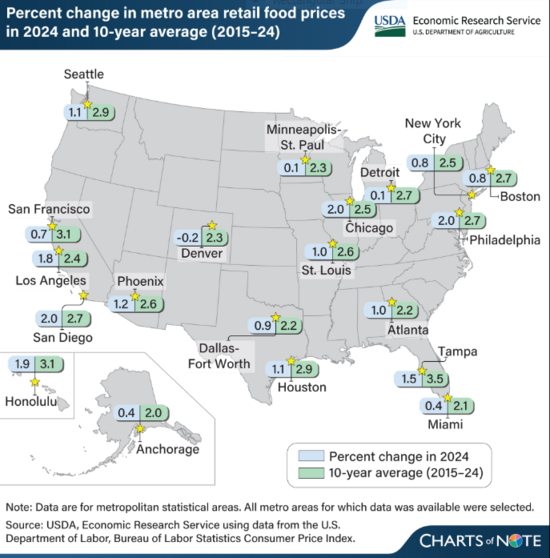Source: USDA news release
Price changes for food typically vary across regions based on consumer purchasing patterns, market shifts, and inflationary trends. In 2024, food-at-home (grocery) prices in Chicago, IL; Philadelphia, PA; and San Diego, CA, each climbed 2.0 percent from the previous year, the highest increases for U.S. metro areas in that year.
Denver, CO, was the only city where food-at-home prices slightly decreased, dropping by 0.2 percent. Food-at-home prices rose by 1.2 percent nationally in 2024, which was a smaller increase than in the two previous years (5.0 percent in 2023 and 11.4 percent in 2022).
Over the past 10 years (2015-24), Tampa, FL, had the highest increase at 3.5 percent per year on average, followed by Honolulu, HI, and San Francisco, CA, both of which increased by 3.1 percent. In comparison, Anchorage, AK, had the smallest average increase of 2.0 percent over the 10-year period, lower than the 10-year national average of 2.6 percent.
Differences in retail overhead expenses, such as labor and rent, can explain some variation among cities because retailers often pass local cost increases onto consumers in the form of higher prices. Each metro area’s inflation rate is calculated based on a representative set of foods that is unique to the area.
For example, the types of fresh fruits or vegetables available and purchased by consumers can vary across areas, contributing to differences in inflation rates.




